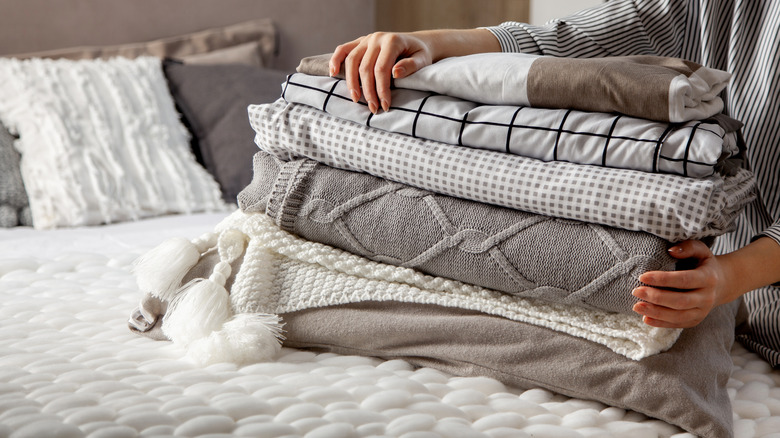Do Blankets Work As A Block For Cold Drafts?
When the cold winter winds start seeping into your home, finding ways to stay warm and cozy becomes a top priority. One readily available solution is wrapping yourself in a comfortable blanket. But have you considered using one (or several) as a barrier against cold drafts?
Cold air typically finds its way into a home through openings in poorly sealed windows and doors, gaps around electrical outlets and pipes, cracks in walls and floors, and even chimneys and attics. These drafts can be particularly troublesome in older homes or buildings with poor insulation. They impact both comfort and energy consumption, causing a constant chill and making it difficult to maintain a consistent temperature within a living space, resulting in higher energy bills. By exploring the pros and cons of using blankets to block drafts and considering alternative methods, you can make informed decisions about the best strategies for keeping your home toasty and draft-free.
Lightweight blankets work well
Blankets can be a practical and versatile tool for blocking cold drafts in your home. One effective method is rolling up blankets to create draft stoppers for doors and windows. By tightly rolling a blanket, using hair elastics or twine to hold it in place, and positioning it snugly at the base of a door or window, you can create a barrier preventing cold air. This technique is handy for doors and windows with noticeable drafts or gaps. An alternative method is to hang blankets on windows or doors. This technique utilizes the insulating properties of blankets to create a barrier against drafts. By strategically placing blankets, you can effectively reduce the amount of cold air entering your living space. Use clips, hooks, or adhesive strips to secure the blankets, ensuring they stay taut and well-fitted.
Thinner, lightweight throw blankets can be a good choice for blocking drafts. For instance, rolling up a light blanket tightly to create a draft stopper or draping it over a window or door does not require excessive effort, and they are easier to suspend from hooks or curtain rods. A thinner blanket may also allow some light to pass through windows while effectively reducing drafts.
Other ways to block drafts
In addition to using blankets, alternative methods can easily and effectively block cold drafts in your home. For instance, weatherstripping windows and doors with materials such as adhesive-backed foam strips, door sweeps, or caulk can create a tight seal that prevents cold air from entering and warm air from escaping. Caulking is another effective technique to seal air leaks. Using a waterproof sealant to fill gaps and cracks in windows, doors, and other areas where drafts may occur helps block cold air and improves energy efficiency by reducing heat loss.
Window treatments like thermal curtains or blinds with built-in insulation can also prevent drafts. Thermal curtains with insulating materials trap warm air inside and block out cold air, contributing to energy savings and improved comfort. Regularly inspecting for cracks, gaps, or damaged seals and promptly addressing them can help eliminate drafts and ensure better energy efficiency.


